Hello to all friends of the wonderful world of Hive.
Hola a todos los amigos del mundo maravilloso mundo de Hive.
In my introduction, I told you that I am an inveterate reader, a passion that began as such at the age of ten when my father bought an encyclopedia from Grolier and there were the juvenile classics, I became passionate about the Verné world, then the Dumas world.
En mi introducción les conté que soy una lectora empedernida, pasión que comenzó como tal a los die años cuando mi papá compró una enciclopedia a la Grolier y allí estaban los clásicos juveniles, me apasioné por el mundo Verné, luego por el mundo Dumas.
And it is about the latter that I will tell you about his (for me) masterpiece: The Count of Montecristo.
Y es de este último de quien pienso contarles y de su (para mi) obra maestra: El Conde de Montecristo.´
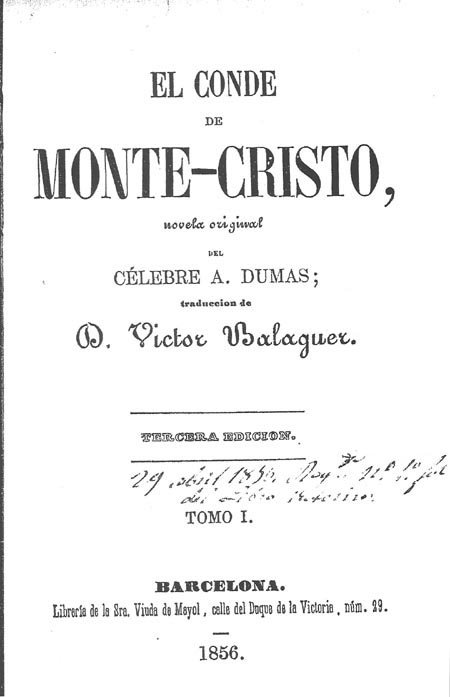
Source
Alexandre Dumas was born in Villers de Cotterets (France) on July 24, 1802, natural son of one of the generals who won more battles in favor of Napoleon Thomas Alexandre Dumas Davy de la Pailleterie known as the Black Count for his skin color and who died in ruin, so Dumas could not continue with his formal education and became self-taught, and to work as a clerk in French notaries. Then, using the influence of the noble title he held, he became secretary to the Duke of Orleans in Paris.
Alexandre Dumas nació en Villers de Cotterets (Francia) el 24 de julio de 1802, hijo natural de uno de los generales que mas batallas ganó a favor de Napoleón Thomas Alexandre Dumas Davy de la Pailleterie conocido como el Conde Negro por su color de piel y que murió en la ruina, por lo que Dumas no pudo continuar con su educación formal y se convirtió en autodidacta, y a trabajar como escribiente en notarias francesas. Luego, utilizando su influencia del titulo nobiliario que poseía pasó a ser secretario del Duque de Orleans en París.
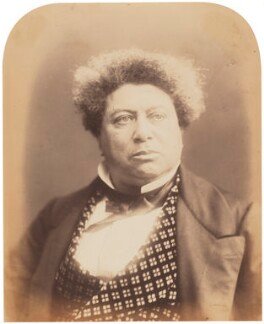
Source
He wrote some two hundred historical and some romance novels and several plays, as well as children's stories and travel books. He was a prolific writer who at certain times in his life needed the help of several collaborators who assisted him in historical research and Dumas provided the context for the novel by writing about the characters and the atmosphere of the time.
Escribió unos dos centenares de novelas históricas y algunas románticas y varias obras teatrales, así como cuentos infantiles y libros de viajes, fue un escritor prolífico que en ciertos momentos de su vida necesito ayuda de varios colaboradores que lo ayudaban en la investigación histórica y Dumas le daba el contexto a la novela escribiendo sobre los personajes y el ambiente de la época.
His best-known books are The Three Musketeers, Twenty Years After, The Viscount of Bragelonne, The Black Tulip, and of course: The Count of Monte Cristo.
Sus libros más conocidos son Los tres Mosqueteros, Veinte años después, El vizconde de Bragelonne, El Tulipán Negro y por supuesto: El Conde de Montecristo.

Source
Do you want to read about love, betrayal, revenge, justice by your own hand, redemption, and hidden treasures? Then this is the book for you.
The story of Edmond Dantés is passionate and has its origin in the early nineteenth century when Napoleon Bonaparte was a prisoner on the island of Elba, and how that special moment makes a chance encounter makes Dumas write about how politics, jealousy, envy, and greed influence.
¿Quieres leer sobre amor traición, venganza, justicia por propia mano redención y tesoros ocultos? Entonces, este es tu libro.
La historia de Edmond Dantés es apasionante tiene como origen los comienzos del siglo XIX cuando Napoleón Bonaparte estaba prisionero en la Isla de Elba, y como ese momento en especial hace que un encuentro fortuito hace que Dumas escriba sobre como influye la política, los celos, la envidia, la codicia.
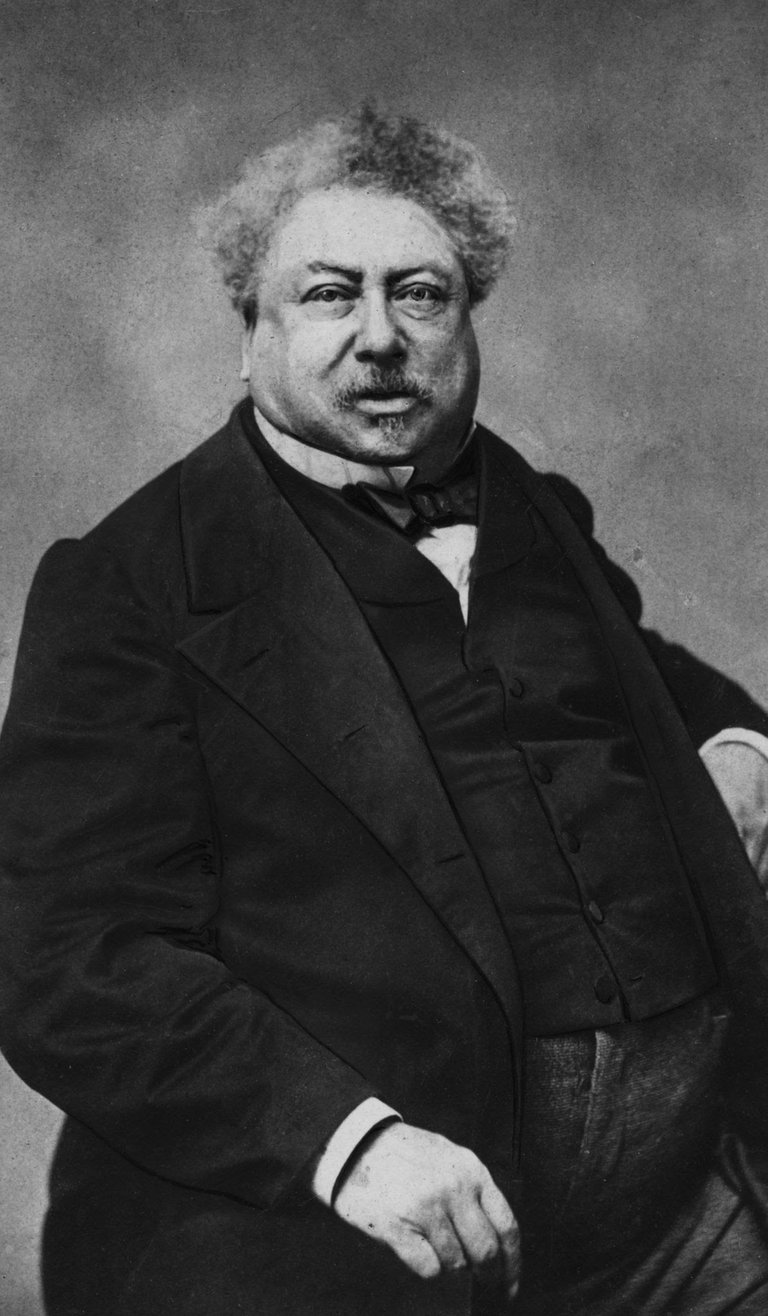
Source
The book is clearly divided into two parts: Dantés' imprisonment on the day of his wedding to Mercedes, his despair when imprisoned, he does not understand the reason for his imprisonment in the fearsome and gloomy Château d'If. His meeting with Abbé Faria, and how he helps him to unravel the reason for his imprisonment. As anger, rage and hatred take hold of him and he accepts what the abbé offers him: treasures and knowledge that will feed his tormented soul.
El libro se divide claramente en dos partes: el encarcelamiento de Dantés el día de su boda con Mercedes, su desesperación cuando, encarcelado no entiende el porque de este en el temible y tenebroso Castillo de If. Su encuentro con el abate Faria, y como este le ayuda a desentrañar el porque de su encierro. Como la ira, la rabia y el odio se apoderan de él y acepta lo que el abate le ofrece: tesoros y conocimientos que alimentarán su atormentada alma.
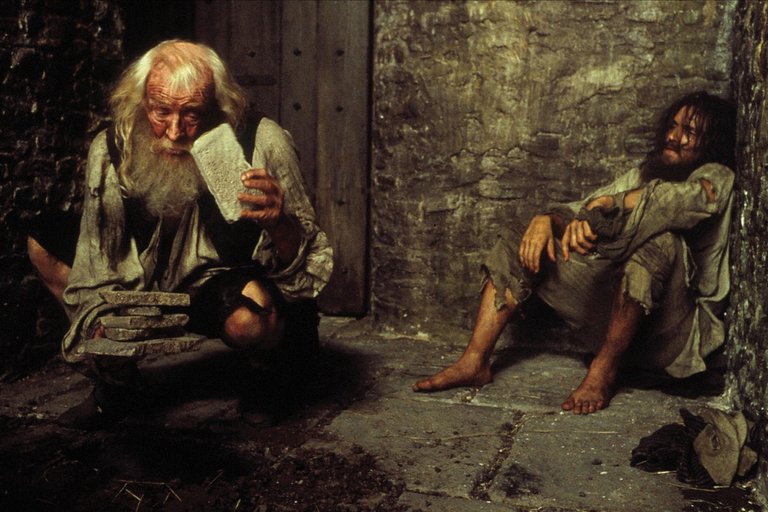
Source
The second part of the book narrates in detail how he carries out his plan to take revenge on each of his enemies, how he meets the woman who should have been his wife and finds her married to one of his fiercest enemies.
It is the ending that always strikes me: his redemption, his having to forgive, the love that is reborn in him.
You can say what you want about Alexandre Dumas, but for me, this is his masterpiece. Very well-woven, well-developed characters for the form in which it was published: eighteen issues of a serial that delighted the French public at the time of its publication.
La segunda parte del libro narra minuciosamente como llevar a cabo su plan de vengarse de cada uno de sus enemigos, como se encuentra con quien debió ser su esposa y encontrarla casado con uno de sus más fieros enemigos. Es el final el que siempre me impacta: su redención, el tener que perdonar, el amor que de nuevo nace en él.
Podrán decir de Alexandre Dumas lo que quieran, para mí, esta es su obra maestra. Muy bien hilvanada, personajes desarrollados para la forma en la cual se publicó: dieciocho números de un folletín que hicieron las delicias del publico francés en su fecha de publicación.
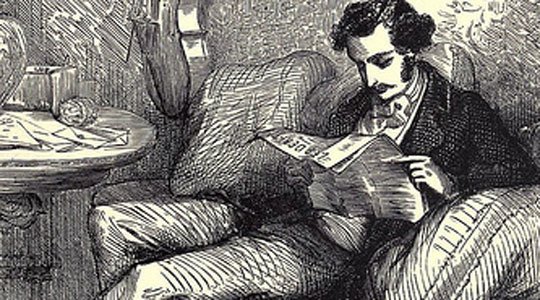
Fuente
The first time I read the Count of Montecristo I was more or less sixteen years old and I was shocked, every time I reread it I get excited about how Dumas developed the environment and the characters, as well as how the historical environment was woven in a fantastic way and gives that realism to this novel that is immersed in the romanticism of the time, as the idea of Justice leads him to his plans for revenge.
La primera vez que leí el Conde de Montecristo tenía más o menos dieciséis años y quedé impactada, cada vez que lo releo me emociona como Dumas desarrolló el entorno y los personajes, además de como el ambiente histórico estuvo tejido de forma fantástica y le da ese realismo a esta novela que se sumerge en el romanticismo de la época, pues la idea de Justicia lo lleva a sus planes de venganza.
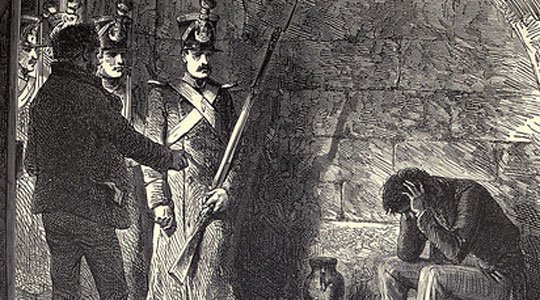
FUente
In his first encounter with Abbé Faria, he feels frustrated, disappointed, it is not what he wants, what he wants is to escape, it is the encounters with the Abbé that offer him, then, the way and the desire to learn, to know, to immerse himself in what could be his future. And there we are: hoping that poor Edmundo will one day escape from his prison, and he keeps us on tenterhooks: waiting for that moment.
En su encuentro por primera vez, con el Abate Faria se siente frustrado, decepcionado, no es lo que quiere, lo que desea es escapar, son los encuentros con el Abate los que le ofrecen, luego, la forma y el deseo de aprender, conocer, sumergirse en lo que podrá ser su futuro. Y nosotros allí: esperando que el pobre Edmundo algún día pueda escapar de su prisión, y nos mantiene en vilo: esperando ese momento.
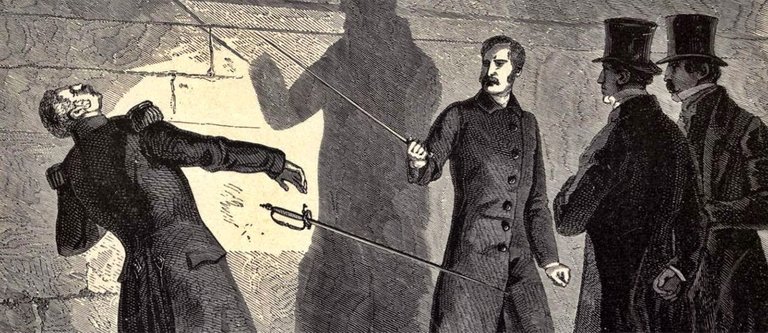
His way of escaping from the terrible Château d'If amazed me at the first opportunity, and it never ceases to amaze me every time I reread the book, his way of saving himself, of rising like a phoenix is the most interesting part, his persecution of his enemies without them having the slightest idea of who was behind everything that happened to them, the hypocrisy of the French aristocratic world of the time to accept whoever held any noble title, even if it was bought, and even if it was the name of an uninhabited island in the middle of the Mediterranean Sea off the Italian coast.
Su forma de escapar del terrible Castillo de If me asombró en la primera oportunidad, y nunca deja de asombrarme cada vez que releo el libro, su forma de salvarse, de resurgir cual pájaro fénix es la parte mas interesante, su persecución a sus enemigos sin estos tener la menor idea de quien estaba detrás de todo lo que les ocurría, la hipocresía del mundo aristocrático francés de la época para aceptar a quien ostentara cualquier titulo nobiliario, así fuese comprado, y que fuese el nombre de una isla deshabitada en medio del Mar Mediterráneo frente a las costas italianas.
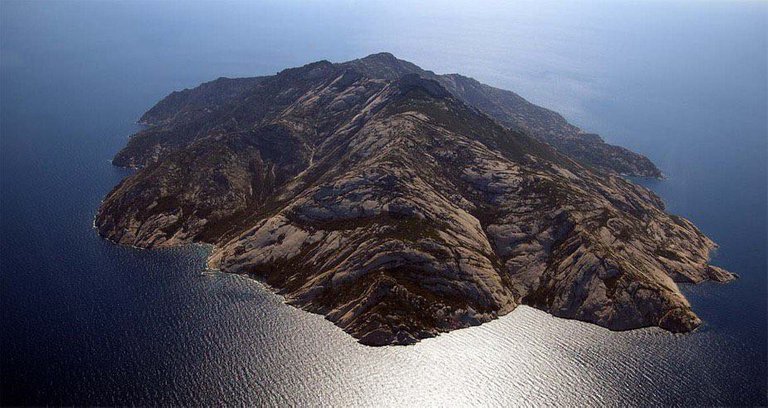
Source
I have never been able to decide which is the part of this superb book that I liked the most, once it was written and published through the periodicals of the time, it was edited and published in two volumes, and I love the style in which it was written for its time. That is why when I read it again I look for the edition with the most traditional language because it brings me closer to his way of speaking, even if the interjections and exclamations sound strange to us.
Nunca he podido decidirme cual es la parte que me ha gustado mas de este soberbio libro, una vez escrito y publicado a través del folletín de la época, fue editado y publicado en dos tomos, y adoro el estilo con el cual fue escrito para su momento. Por eso cuando lo vuelvo a leer busco la edición con el lenguaje mas castizo porque me acerca a su forma de hablar, así nos suene extraño las interjecciones y las exclamaciones.
So my friends of Hive, I reiterate: reading the Count of Montecristo will make you know how France was in the nineteenth century, how they spoke, what they wore, what they ate, how the aristocracy lived and how it influences the masterful story of Dumas, so I invite you to immerse yourself in the World of Classics of Literature, so in capital letters, and enjoy this wonderful world.
Así mis amigos de Hive, lo reitero: leer el Conde de Montecristo te hará conocer como era Francia en el siglo XIX, como hablaban, que vestían, que comían, como vivía la aristocracia y cómo influye en el relato magistral de Dumas, así que te invito a sumergirte en el Mundo de los Clásicos de la Literatura, así en mayúsculas, y disfrutar de ese mundo maravilloso.
See you soon in another review of the books that have filled my life. See you later Hive Friends.
Nos vemos pronto en otra reseña de los libros que han llenado mi vida. Hasta luego amigos de Hive.
Fascinante, me encantan las novelas históricas... y tu reseña: Simplemente genial, fabulosa.
Gracias por compartir 🥰
Este es mi libro favorito, es una historia fascinante, he leído el libro dos o tres veces, lo guardo como a un tesoro, porque llegó a mi vida en un momento en el que las acciones de Edmundo no me parecían venganza, sino justicia.
Congratulations @sofitere! You have completed the following achievement on the Hive blockchain and have been rewarded with new badge(s) :
Your next target is to reach 500 upvotes.
You can view your badges on your board and compare yourself to others in the Ranking
If you no longer want to receive notifications, reply to this comment with the word
STOP